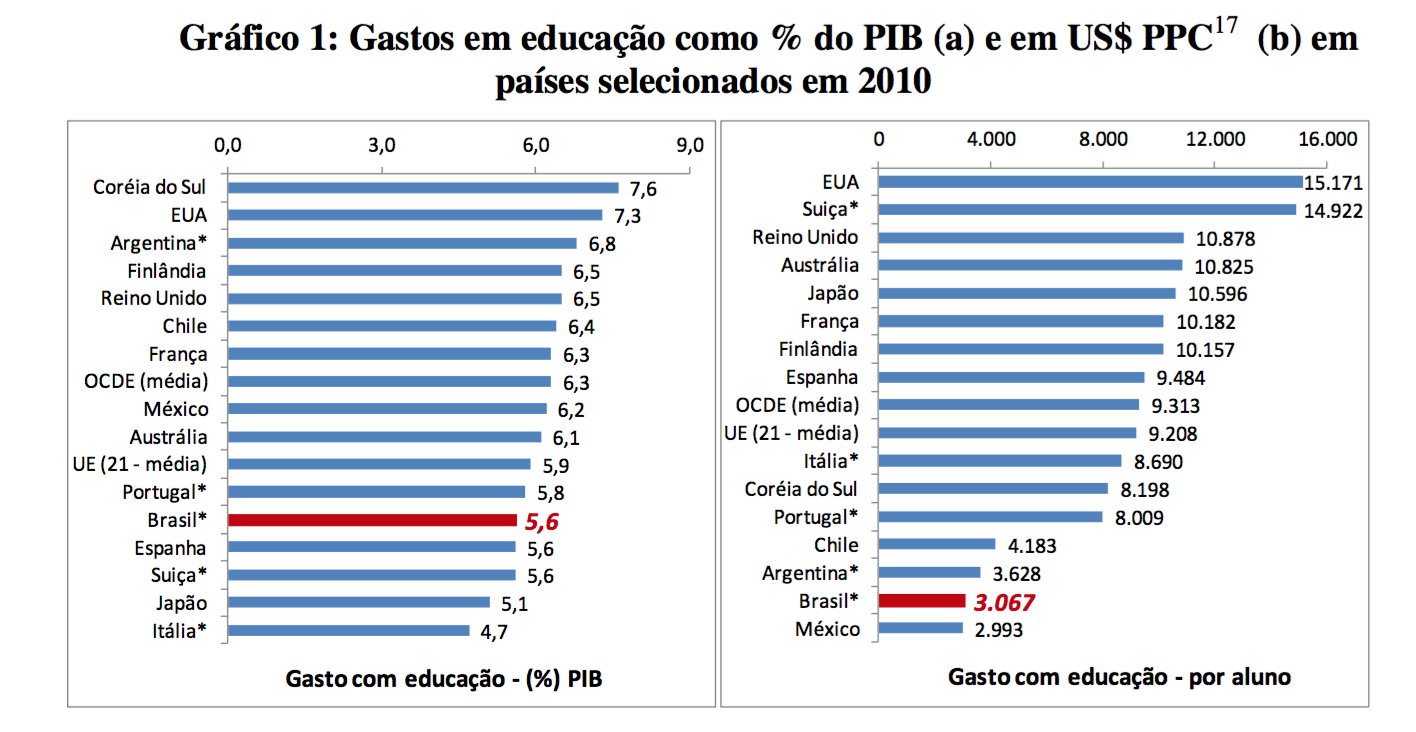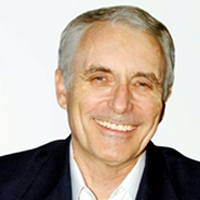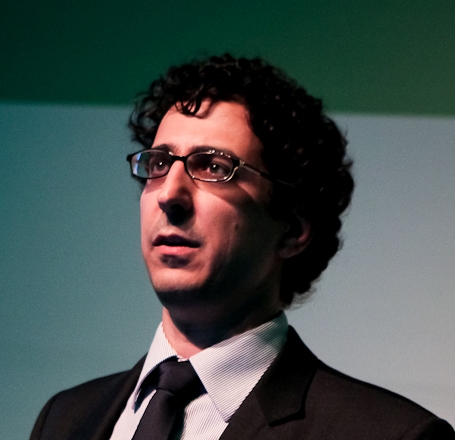Carvalho, C., 2013, DILEMAS DO FINANCIAMENTO E A META 20 DO PLANO NACIONAL DE EDUCAÇÃO.
- Artigo analisando as leis relacionadas ao financiamento público da educação – Projeto de Lei do Plano de Educação (PNE)
- Altíssimo desequilíbrio entre recursos para ensino superior vs ensino básico e fundamental
- Composição complicadíssima em termos de regras de repasses
- Gastos com educação em geral são baixos com relação ao OCDE
- Gastos por aluno são MUITO mais baixos com relação ao OCDE

Menezes, N., 2014, O Plano Nacional de Educação Publicado, Valor Econômico
- “PNE foi concebido pelos movimentos corporativistas para conseguir transferir mais recursos da sociedade para si próprios, sem que haja cobrança de mais eficiência na aplicação desses recursos.”
- “Aumentar os gastos simplesmente aumenta a mobilização dos movimentos organizados da sociedade para capturar esses recursos.”
- “Uma das únicas notícias boas do PNE foi a estratégia incluída pelo Senado federal, que estabelece políticas de estímulo às escolas que melhorarem o desempenho no Ideb, “de modo a valorizar o mérito dos professores, diretores e funcionários”. Ela foi incluída apesar da resistência dos movimentos corporativistas, que são contra a meritocracia.”
Menezes, N., 2012, Mais gastos com educação? Valor Econômico
- “Em primeiro lugar, deve ficar claro que o PNE é somente uma carta de intenções. Nada garante que as metas serão efetivamente atingidas.”
- “Hoje em dia, o Ensino superior apropria 15% dos gastos públicos com Educação, mas tem apenas 3% do total de Alunos.”
- “em nenhum país do mundo essa discrepância de gastos entre o Ensino básico e o superior é tão grande.”
- “Por fim, vale a pena ressaltar que aumento de gastos não significam aumento da qualidade da Educação. Várias pesquisas, inclusive da OCDE, mostram esse fato de forma inequívoca. Sem melhorar a formação dos Professores, a seleção dos diretores e sem demitir os piores Professores ainda em estado probatório, nada vai mudar, mesmo que gastássemos os 10% do PIB com Educação. Haveria somente uma maior transferência de recursos da sociedade para os Professores, sem melhoria do aprendizado dos Alunos.”
Maílson Ferreira da Nóbrega, M. F., 2014 Escolha fatal: 10% do PIB para a educação. VEJA
- “A educação não precisa de mais dinheiro, e sim de uma revolução na gestão e na forma de remunerar os professores, para melhorar sua qualidade. A lei pouco ou nada contribuirá para isso. Tende a ser uma escolha ruinosa.”
Almeida, M. & Pessoa, M. L. S., 2015, Desequilíbrio econômico é estrutural e exige correções mais duras. Folha de S. Paulo
- “Certamente, ocorreu um grave descontrole dos gastos públicos a partir de 2009. Para além dos problemas de curto prazo, porém, existe um desequilíbrio estrutural. Desde 1991, a despesa pública tem crescido a uma taxa maior do que a renda nacional.”
- “Nesses 23 anos, o setor público apropriou-se de 45% do crescimento da renda nacional para financiar seus gastos, incluindo programas de transferência de renda e demais políticas públicas.”
- “Como cada idoso custa aproximadamente o dobro do que uma criança na escola, o quadro torna-se mais dramático. Ponderada pelo custo de cada grupo, a dinâmica demográfica tem acarretado aumento do gasto público há mais de uma década.”
- “O grave problema fiscal do Brasil reflete a concessão desenfreada de benefícios incompatíveis com a renda nacional. Prometemos mais do que temos, adiando o enfrentamento das restrições existentes. Deixamos para as próximas gerações as contas a serem pagas, porém o futuro tem o inconveniente hábito de se tornar presente.”
Congresso Nacional, Plano Nacional de Educação
- Um plano com 10 metas fica difícil de se cumprir
- Não há penalidades previstas para o não cumprimento das metas, nem prêmios
- Promoção de 2 (sim – somente duas) conferencias nacionais de educação até 2020!!!







